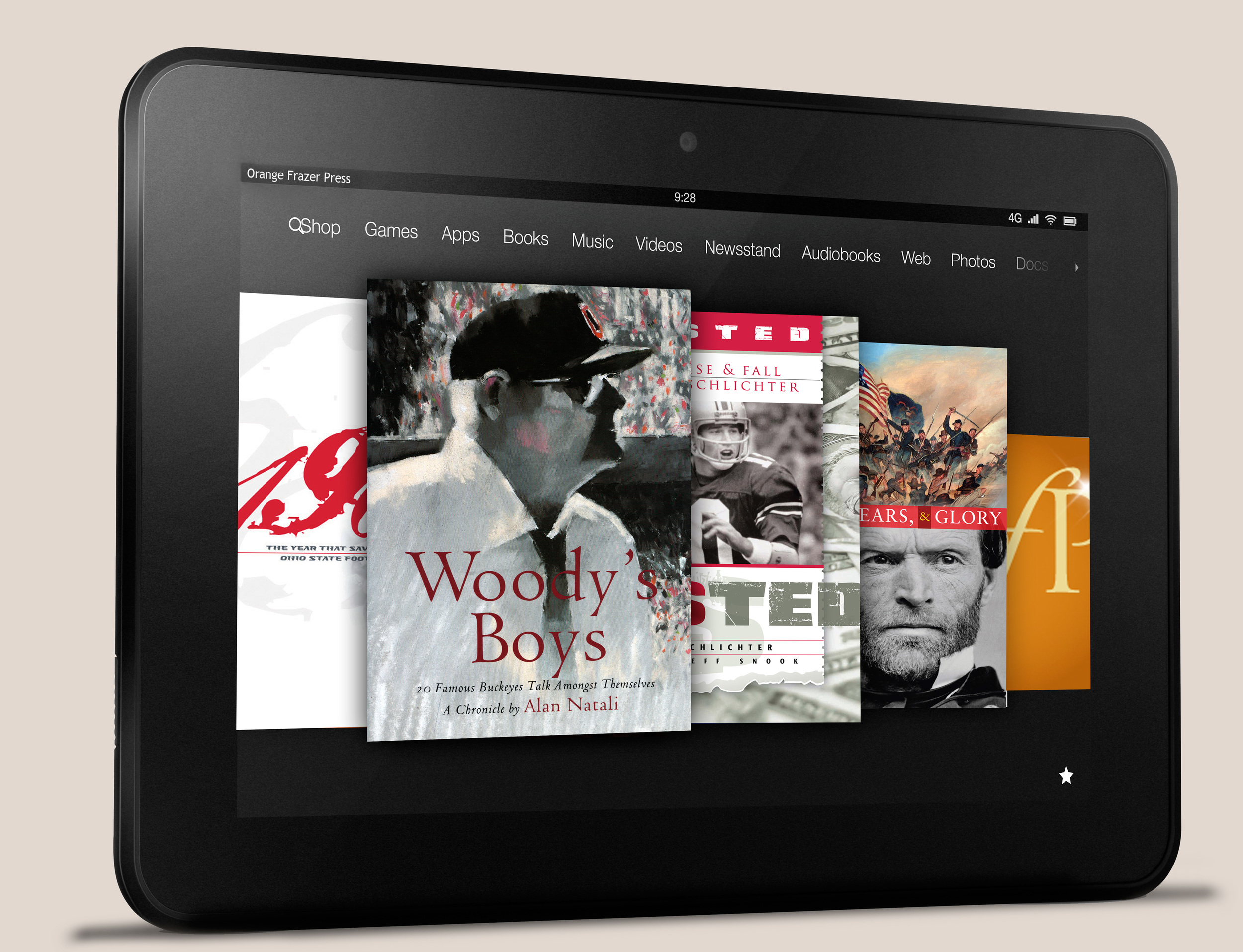Print vs. Digital: Everybody Wins?
 Last May, I spoke at the Ohioana Library Festival on a panel aptly called, “The Future of the Book.” As you might imagine, the discussion volleyed from “print-is-dead” pundits to book romantics (“I just love the smell of a print book” has become the most popular of clichéd phrases in today’s print vs. digital discussion). I found myself caught in the crossfire, a print-and-digital apologetic, a non-confrontational publisher who feels a desperate need to simultaneously put the elderly woman in the back row at ease (“Of course we will always have print books”) and excite the young people sitting front and center (“We are witnessing a new era for the book!”). The print vs. digital discussion has addled my identity, forcing me into difficult, and often emotional and abrasive, discussions.
Last May, I spoke at the Ohioana Library Festival on a panel aptly called, “The Future of the Book.” As you might imagine, the discussion volleyed from “print-is-dead” pundits to book romantics (“I just love the smell of a print book” has become the most popular of clichéd phrases in today’s print vs. digital discussion). I found myself caught in the crossfire, a print-and-digital apologetic, a non-confrontational publisher who feels a desperate need to simultaneously put the elderly woman in the back row at ease (“Of course we will always have print books”) and excite the young people sitting front and center (“We are witnessing a new era for the book!”). The print vs. digital discussion has addled my identity, forcing me into difficult, and often emotional and abrasive, discussions.
But perhaps it won’t always be so abrasive. Last week’s PEW report on e-reading and print reading had the interwebs humming again, and for the first time in a long time, my dual identity found a supporting voice: print is not dead, and neither is digital.
According to the report, the percentage of American adults reading e-books is rising (from 23% in 2012 to 28% in 2013, an albeit modest 5% difference, considering the sharp increases we saw in e-reading’s early days). The report also notes, however, that 7 in 10 Americans reported reading a book in print, an increase of 4% from 2012. The report clearly indicates that Americans are reading both print and digital books, and that only 4% of readers are digital-only readers.
But what if this is generational? Most digital reading advocates will argue that the percentage of the population still insisting on print reading is aging, and that with the newest generation (38% of which have used a mobile device before the age of 2), we will see a steep and steady decline in print reading. If this were true, we should already see a trend: younger people reading fewer print materials than older adults.
This doesn’t hold up, though.
In a PEW report on library and print vs. digital reading released last year (reported on by Digital Book World, no less), it was shown that younger Americans (specifically in the 16-29 age bracket, which would straddle the millennial and digital native generations), prefer mixed digital and print services in libraries. They want apps, yes, but they also want real librarians and physical books. And most surprisingly, they are more likely to have read a print book in the last year than any other age bracket: specifically, 75% of 16-29 year-olds have read one or more print books in the last year, compared with 64% of older adults.
So, to the elderly lady in the back row, and the excited young folks sitting front and center, steady yourself, because it is the opinion of this writer that the numbers are stacking up in our favor, and you can expect an innovative mix of print and digital for years to come.
